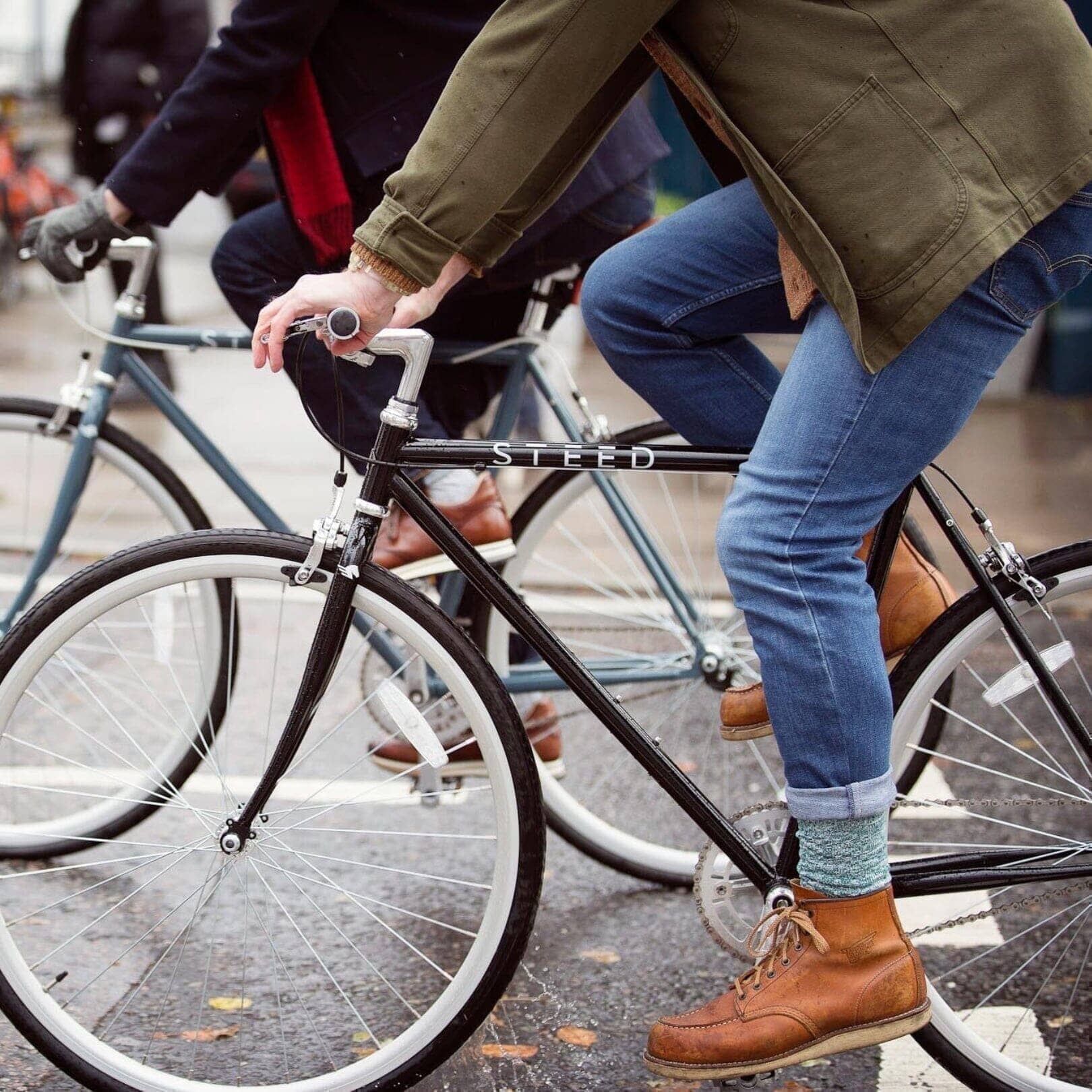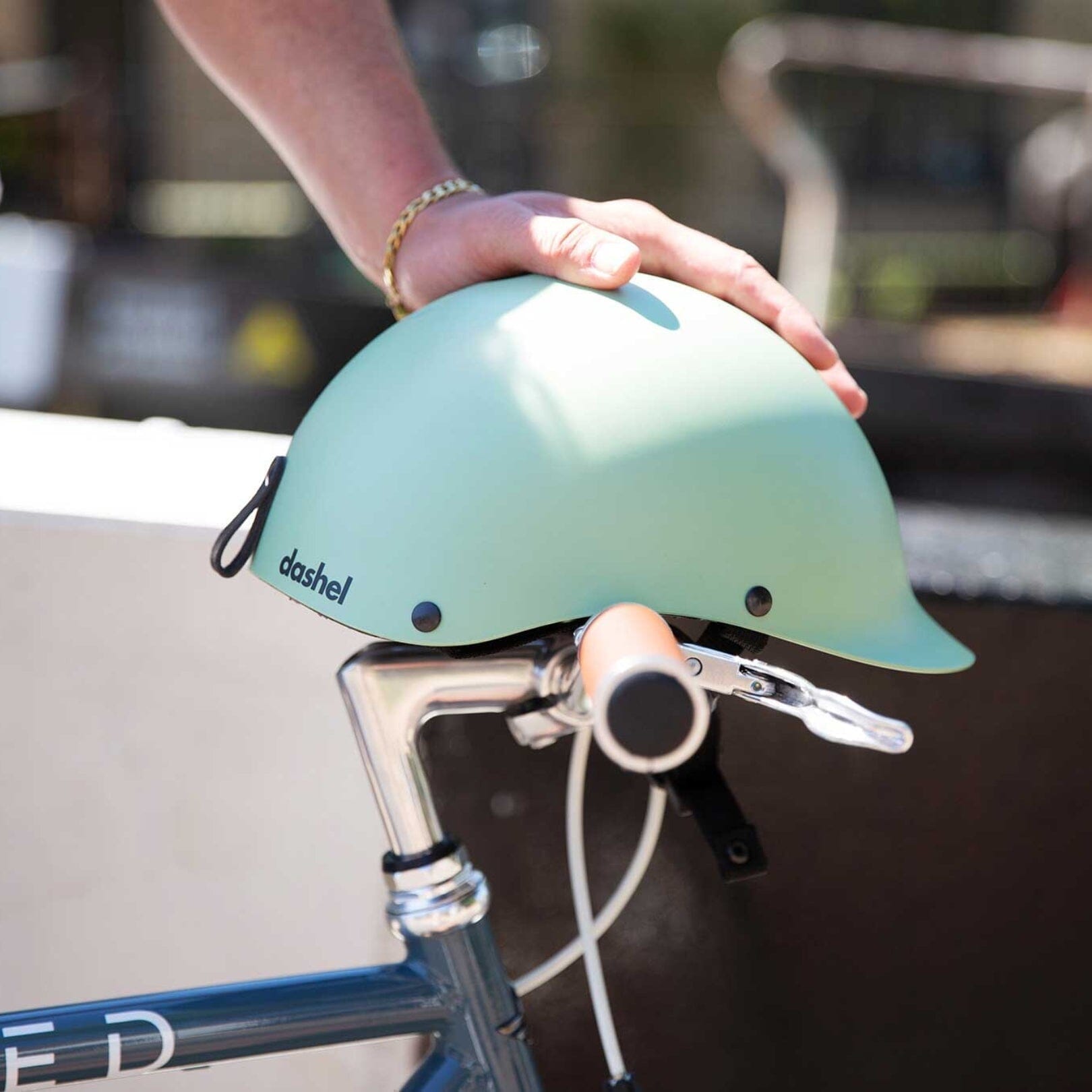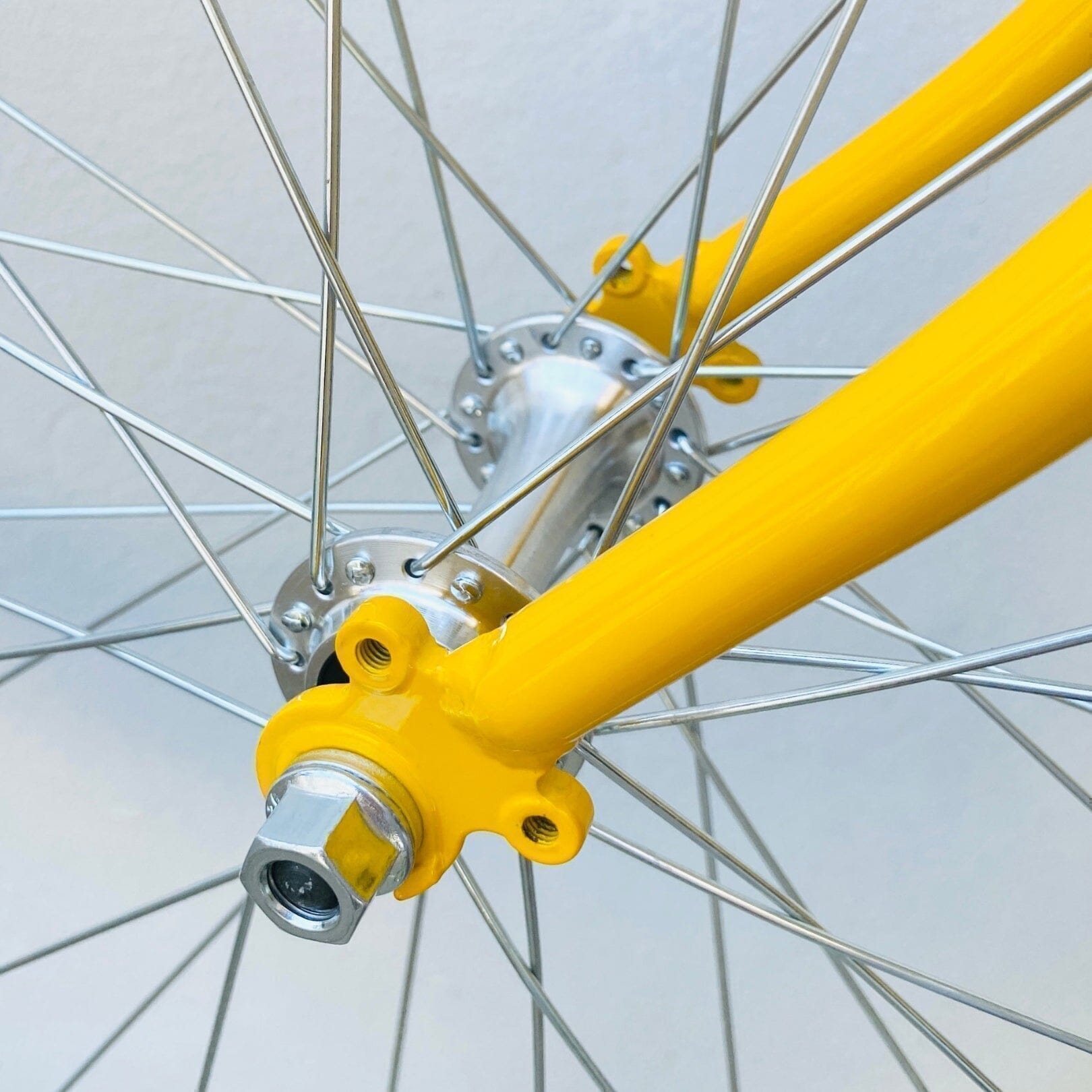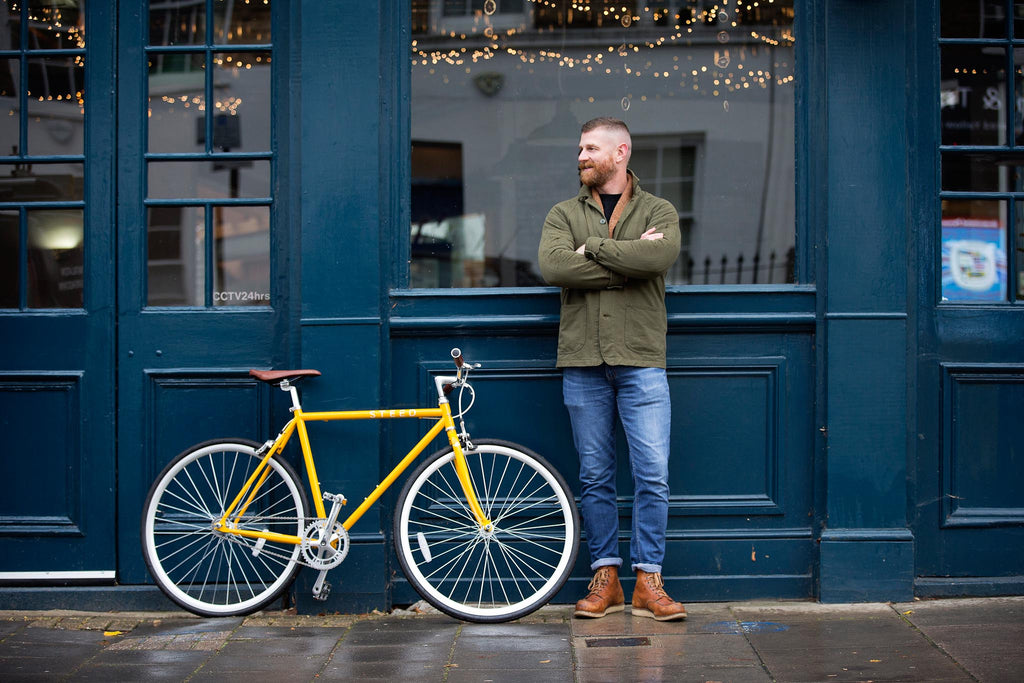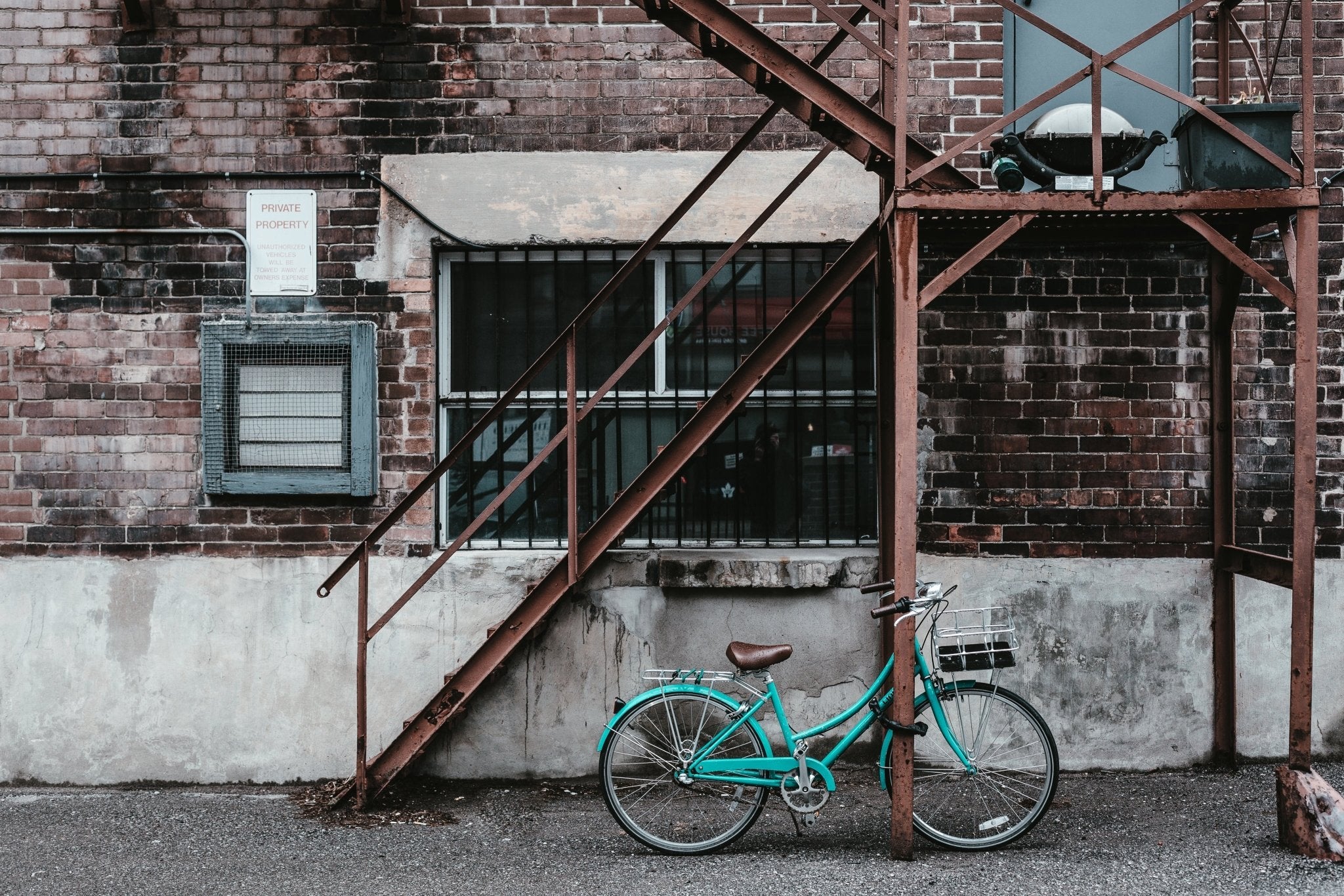What’s the best bike tyre pressure?
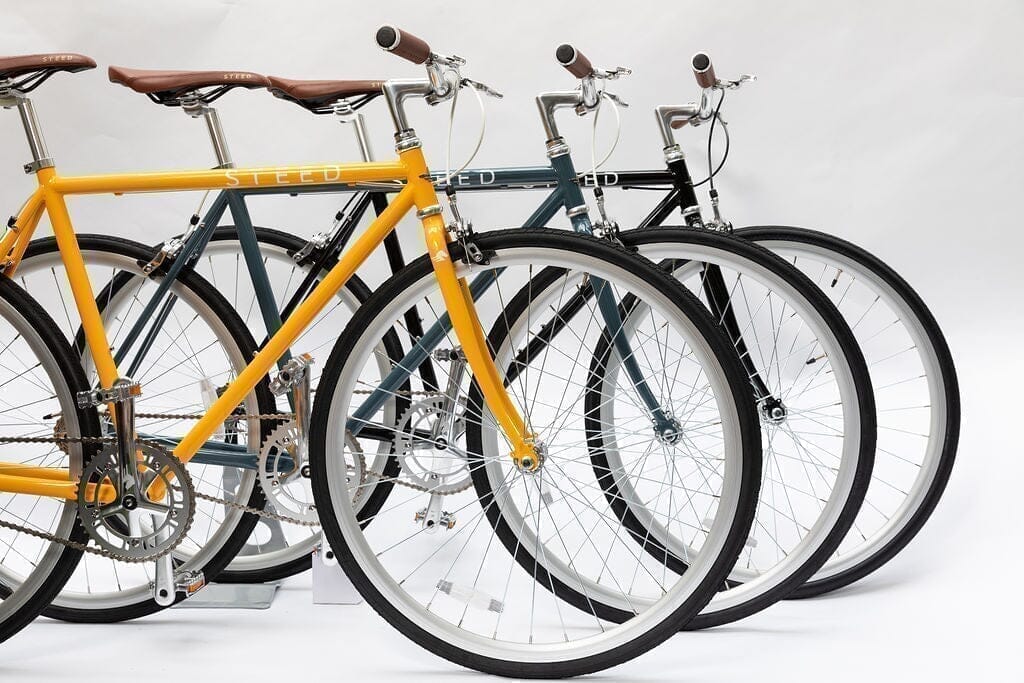
Bike tyre pressure is measured in PSI, which stands for pressure per square inch.
Even if you’re a casual rather than a competitive cyclist (without a single item of lycra in your wardrobe), it’s important that you:
- Know the ideal bike tyre pressure for your tyre
- Check tyre pressure regularly as part of your bike maintenance routine
- Top up the air pressure in your bicycle tyres when necessary
That’s because tyre pressure impacts your riding experience and your safety, as well as the longevity of your wheels and tyres.
Unfortunately, when we get asked what pressure bike tyres should be, there’s no easy answer. One size (or pressure, in this case) doesn’t fit all.
Here we’ll take a look at the factors that influence ideal bike tyre pressure – and help you to work out the right PSI for your bike.

What factors influence ideal bike tyre pressure?
The ideal bike tyre pressure varies depending on your bike – and how you choose to use it.
Tyre width
Narrow tyres need more air pressure than wide ones.
Tyre construction
The tyre casing is the layer underneath the tyre tread. This varies between tyres. The more robust the tyre casing, the lower you can take your PSI.
Tube vs tubeless
If you have tubeless tyres on your bike, you can get away with lower tyre pressures.
Weight
The weight of the rider and any luggage, along with how that weight is distributed, all affect the recommended bike tyre pressure. The lighter the load, the higher the air pressure required.
Terrain
High tyre pressures are good for speed. But they can make things pretty uncomfortable on bumpy terrain. On particularly rough surfaces, too low a PSI is also a problem, as you risk damaging the wheel rim and/or inner tube.
Weather conditions
If it’s very hot or very wet, lower bike tyre pressure is best. A lower PSI gives tyres better contact with wet roads. And they allow room for pressure to increase as temperatures rise.

How bike tyre pressure influences performance
Low tyre pressure
Pros
- Better traction
- Better grip
- Increased comfort
- Less rolling resistance (friction) on bumpy terrain
Cons
- More chance of pinch punctures in tubed tires
- Increased wear and tear
- More rolling resistance on asphalt and easy terrain
High tyre pressure
Pros
- Fewer punctures
- Less wear
- Less rolling resistance on asphalt or easy terrain
Cons
- Less grip and traction
- Less comfort
- More rolling resistance on bumpy terrain
How to work out the ideal bike tyre pressure for your bike
There are all sorts of complicated calculations you can do to pinpoint a precise tyre pressure for your bike.
But this is only really necessary if you’re a super serious cyclist, interested in optimising your speed or performance to the nth degree.
If you’re an urban cyclist, using your bike to quickly and comfortably get from a to b, here’s what you need to do to work out the ideal tyre pressure.
Find out the recommended bike tyre pressure range
Take a look at your bicycle tyre. A recommended PSI range is usually printed on the side of your tyre, near where it meets the wheel rim.
If you can’t find one on your bike, then these PSI ranges are a fairly safe bet.
- Road bike: 80 to 130 PSI
- Hybrid bike: 40 to 70 PSI
- Mountain bike: 25 to 35 PSI
Pick a point within the PSI range
These PSI ranges give you room for manoeuvre, tweaking your PSI depending on the factors we listed above.
For example, if you’re riding a bike with wide tyres, on a wet day, with a relatively hefty toddler on board, you may choose a PSI towards the bottom of the recommended range.
Also bear in mind the key benefits of both high and low PSI:
- High tyre pressures = increased speed on easy terrain and decreased tyre wear
- Low tyre pressures = better grip and increased comfort
Alternatively, if you’re keen to get your geek on, you can use a tool like this bike tyre pressure calculator to get a more precise PSI recommendation.
Grab a pressure gauge and a pump
For this next bit you need a pressure gauge and – the most important piece of cyclist’s kit – a bike pump.
Simply attach the pressure gauge to your tyre valve to get a PSI reading. And then use your pump to increase pressure to the desired PSI.
Now, you’re good to go. With pressure checked you can cycle confidently, knowing your bike tyres are fit for the journey ahead.
Want more bike care tips? Visit the Steed Bikes blog or contact one of our bicycle boffins for in depth advice.
Bike tyre pressure FAQs
What is the correct bike tyre pressure?
That depends on your bike and what you’re using it for. Check out the recommended PSI range for your type of bike tyre. Or use a bike tyre pressure calculator if you want to be more exact.
How often should I check bike tyre pressure?
Some types of bike tyre lose pressure faster than others.
Check the tyre pressure on your road bike once or twice a week. And check the pressure of fatter bike tyres – like those on hybrids and mountain bikes – once every two to four weeks.
0 comments


